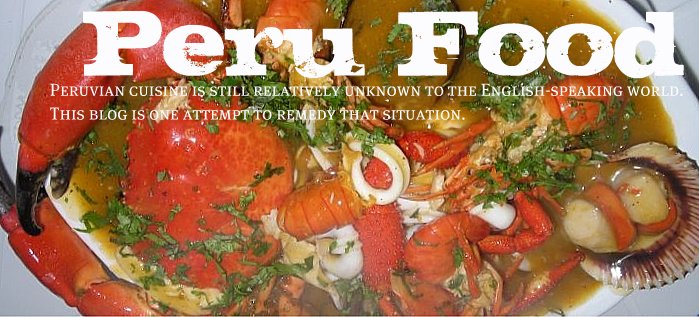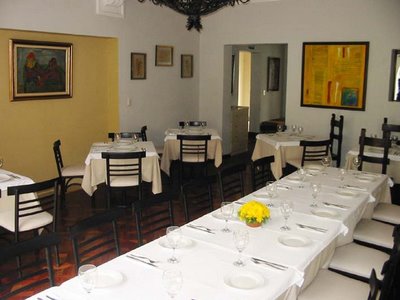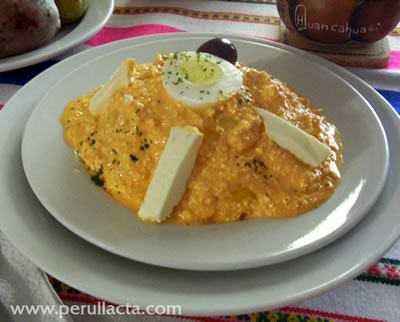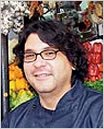To read the original Spanish article, click here.
This translation is from the wonderful Peruvian cooking show, Divina Comida (Divine Food) on Radio Programas del Perú (RPP), hosted by Cucho La Rosa, one of the leading proponents of Peruvian cuisine, known for ceaselessly searching out the best food in the most off-the-beaten path locations. I hope this translation does him justice.
The text and the photos are all from the RPP website.
Happy eating!
The shrimp route leads us to Azpitia, in the province of Cañete.
From the program Divina Comida on RPP
Azpitia (also known as San Vicente de Azpitia) is located one hour south of Lima, in the province of Cañete, and is a paradisiacal location where you find the freshest and most attractive shrimp, which come from the area near Calango.
Azpitia offers visitors many different types of local delicacies, and locally produced, good quality, wines and piscos.
Angela Caballero calls herself a guisandera (stew-maker). She is the owner of the El Mayoral restaurant and hotel, and although she never attended a culinary institute in her life, her good taste has led her to prepare sophisticated dishes utilizing locally grown products.
One of Angela's greatest inventions is a dish she calls camarones chacareros (the word camarón means shrimp). This impressive meal is made of shrimp and boiled yuca root, seasoned with a sauce made of ají amarillo and saffron, which is cooked, and then served, wrapped in a banana leaf.
Her ravioles cholos and her duck in a creamy ají sauce are other mouth-watering dishes at her country-style restaurant, which is well-known among gastronomic tourists, those visitors who are constantly searching for places like hers, that offer wonderful culinary experiences.
In Santa Cruz de Flores, near Azpitia (also in Cañete province), you can also spend a pleasant time with your family or friends visiting the Bodega San Andrés, owned by María Arias, who produces good quality wine and pisco. Thanks to her efforts and dedication, she has won local prizes for the excellence of her product.
In September, Azpitia celebrates its Pisco Festival, and you can easily obtain this grape-based spirit at a reasonable price directly from the producers.
To reach El Mayoral, you need to head south on the Panamericana Sur, until you arrive at León Dormido beach (at kilometer 80), where you find the turn off. You need to continue along the old coastal highway to the town of San Antonio, and from there, follow the signs.
As a special treat, Angela Caballero has provided us with her recipe for her famous camarones chacareros.
Camarones Chacareros as made at El Mayoral
Preparation for one person.
Ingredients:
8 fresh medium-sized shrimp
2 tablespoons of ají amarillo cream
1 hearty splash of extra virgen olive oil
1 teaspoon of finely-diced garlic
1/4 teaspoon of saffron
Salt and pepper
Banana leaves, previously smoked
6 pieces of boiled yuca root
Preparation:
In a bowl, combine the ají amarillo, the oil, the finely-diced garlic, the saffron, the salt and pepper, and mix well. Place the shrimp in this mixture, and let them marinate for about 15 minutes.
In the meantime, place the banana leaf (once you have cut it to the right size) on a table. Place the pieces of boiled yuca, and then the shrimp, in two rows upon the banana leaf. Add the remaining mixture on top of the shrimp and yuca. Fold the banana leaf as if you were making a small package, and tie it. Steam cook the package for 10 minutes.
Serve in the banana leaf itself.
Peru.Food@gmail.com
.
.
.
Click here for the Peru Food main page.
TAGS: Peru, Peruvian, food, cooking, cuisine, cocina, comida, gastronomía, peruana
TAGS: Peru, Peruvian, food, cooking, cuisine, cocina, comida, gastronomía, peruana


























